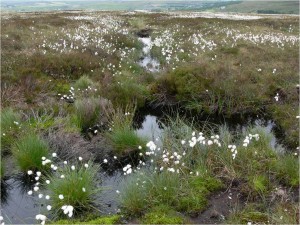 And in case any readers of this blog think that site designations do not matter too much, I hear of a flower-rich meadow which is in the proposed (for a long time) West Pennine Moors Site of Special Scientific Interest that is now destroyed and has a barn built on it.
And in case any readers of this blog think that site designations do not matter too much, I hear of a flower-rich meadow which is in the proposed (for a long time) West Pennine Moors Site of Special Scientific Interest that is now destroyed and has a barn built on it.
As a local has written to Blackburn and Darwen unitary authority, ‘Despite the statement that, ‘There are no statutorily protected sites within the vicinity–’, it is my understanding that the [site name] is included within the provisional boundary of the West Pennine Moors SSSI. In the recognition that delays in the designation process have been introduced at a senior level within Natural England; I suggest that Blackburn with Darwen seek an opinion over this matter directly with Natural England, at a national rather than regional level. It does not bode well for that organisation that natural heritage is being lost whilst it deliberates over designation strategies. Surely, it should be a material consideration in determining the planning application that [site name] was potentially to be included within a statutory site.’
There may well be other examples of important habitat being lost while Natural England drags its feet and that is outrageous.
 Natural England is an ‘environmental regulator’ – fail!
Natural England is an ‘environmental regulator’ – fail!
The Chair of Natural England, Andrew Sells, is ‘responsible for leading the organisation and making sure that it fulfills all of its goals’ – fail!
The Chief Executive, James Cross, is responsible for ‘the day to day management of the organisation’ – fail!
The Natural England Board ‘ensures that Natural England fulfils the long term aims of our strategic direction’ and is there to ‘review performance’ – fail!
The Audit and Risk Assurance committee of Natural England exists to ‘advise the Board and Accounting Officer on matters of financial accountability, risk, control, assurance and governance’ – fail!
Perhaps this collection of failed public servants feel that they are doing what George Osborne requires of them as they let our natural heritage be diminished under their watch.
[registration_form]
Total betrayal by totally inept.
Yes, that is the problem – this is exactly what the Conservative party is after – a process of degrade, then destroy. I’ve just been talking to a forestry colleague who reports the same from the administration of forestry grants: from a position of smoothly running competence Defra/the Conservatives have reduced the system to one where no one knows who is meant to be doing what. One amalgamation – and NE/EA, FC/NE or NE/EA/FC will be in the Government’s sights and even if the people are still there (though fewer) the level of chaos will have been stepped up to a point where there is virtually no work actually done properly. And the Government will turn round and say ‘you don’t like it – so we’ll solve it, by abolishing it’. The same thing is happening, bigger, more blatantly and more seriously in the health sector – no one can manage effectively if management if continually harassed (as is happening in NE, too) and chief execs change every two or three years at best. Who would want to work in those conditions ? Who would want to work for bosses (Ministers) who actually want you to fail as is clearly the case with NE ? So the buck stops very clearly with the Chairman and Ms Truss, not the civil servants down the line.
Mark,
My understanding is that until such time that Natural England formally notifies a local planning authority (and others such as the land owner, if different) that an area is going to be designated as a Site of Special Scientific Interest (SSSI), there is no obligation on the decision maker to materially consider that it could be. Even when they are notified, there is a four month period within which any party can appeal the designation, giving reasons.
So for a planning application within what may become a SSSI, any objector can only rely on legislation relating to protected species (if any) that may be present within the study area (or could be affected by the application). There is some argument to be had to apply the Guidelines for Selection of Biological SSSIs (see http://jncc.defra.gov.uk/page-2303) and ask questions of the applicant in terms of mitigation and/ or enhancement but it must be viewed in the context that the suite of SSSIs are representative of the range of habitats present and not a complete inventory. Similarly, it would be worth reviewing the site with the following local document (https://www.blackburn.gov.uk/New%20local%20plan%202/5.27a%20BwD%20Local%20Wildife%20Sites%20(Stepping%20Stones)%20May%202011.pdf) and again, ask questions of the LPA (I am assuming the site is not designated as a Local Wildlife Site).
This all said, the designation of a site as a SSSI (or even a European Protected Site) is not a full-proof way of preventing development activities; even major ones. It adds a layer of protection and would necessitate additional work by the developer but it is not insurmountable.
Richard
Richard – indeed. Notification is not complete protection (quite rightly – it is a flag of importance) but lack of notification is complete lack of protection.
The site is identified as a (Lancashire) Local Wildlife Site – for its MG8 National Vegetation Community. The (retrospective) planning application number is 10/15/0912.
thanks Dave – that’s what I was going to ask.
If this meadow was nationally important and destroyed by built development, why was it not protected via the Town and Country Planning (EIA) Regulations, while NE were mulling over its notification?
Miles
For a development to be covered by an Environmental Impact Assessment; it needs to fall within either Schedule 1 or Schedule 2 of the Town and Country Planning (Environmental Impact Assessment) Regulations 2011; see http://www.legislation.gov.uk/uksi/2011/1824/pdfs/uksi_20111824_en.pdf for the text. Having briefly looked at the ecology report for the site, I would suggest that neither the proposals, nor the extent (area) of the application site meets the necessary threshold for EIA purposes. Thus, the application will be solely covered by planning legislation, which still requires due diligence when it comes to ecological matters.
Richard